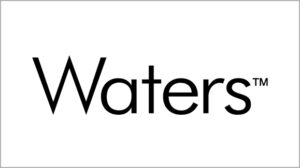Tuesday, September 10 – 12h45 / 13h30

LC-based Analytical Tools for AAVs, LNPs, and mRNA Improved Potency and Safety Indicating Measurements
Mateusz Imiołek, Principal Scientist, Cell and Gene Therapy Consumables, Waters Corporation
Gene therapies have advanced over the past decade to become a promising class of therapeutics capable of treating many different intractable diseases. On the path to creating and releasing these medicines, there can be uncertainty around drug design, physicochemical properties, impurities, and their correlation to potency and safety.
Chromatography columns with improved recoveries, higher resolution, and greater efficiency make it possible to resolve some of this uncertainty. In this talk we will share our recent advances in Size Exclusion Chromatography column technology, showcasing applications of recently introduced low adsorption wide pore columns (450 and 1000 Å) for reliable characterization of gene vectors: adeno-associated viruses (AAVs), lipid nanoparticles (LNPs) and their nucleic acids payloads such as DNA and mRNA. We will explore the impact of reducing particle size on increasing analysis efficiency and throughput while maintaining its robustness. We will discuss how a new generation of SEC column technology has enabled in-depth characterization of intact species and evaluation of both established (e.g. AAV aggregation and empty/full ratio) and emerging critical quality attributes (e.g. mRNA heterogeneity) in multiattribute measurements facilitated by online MALS detection. The improved utility of these SEC columns for specific applications, like precise quantitation of multiple payload LNPs using denaturing SEC, will be demonstrated.
Orthogonal chromatographic modes will also be presented to provide example methods for comprehensive characterization of nucleic acids. Ion Pairing-RPLC Columns featuring vapor deposited hybrid silica surface hardware, especially in an ultrashort 20 mm length format, lend themselves to fast integrity and purity analysis of therapeutic oligonucleotides and some of their critical molecular features (e.g. CRISPR guide RNA modified termini and mRNA PolyA tails). Additional insights may be gained using Anion Exchange Chromatography, which is particularly useful for the separation of viral capsids, complex DNA templates, and CRISPR ribonucleoprotein (RNP) structures.
LC-based assays are playing an increasingly important role in the characterization of various gene therapeutics and participants of this seminar can expect to learn about the latest developments in this field of work. Everyone interested in learning about current analytical challenges for new modality drugs and possible testing approaches using SEC, IP-RPLC and AEX will find this to be an information packed seminar.


